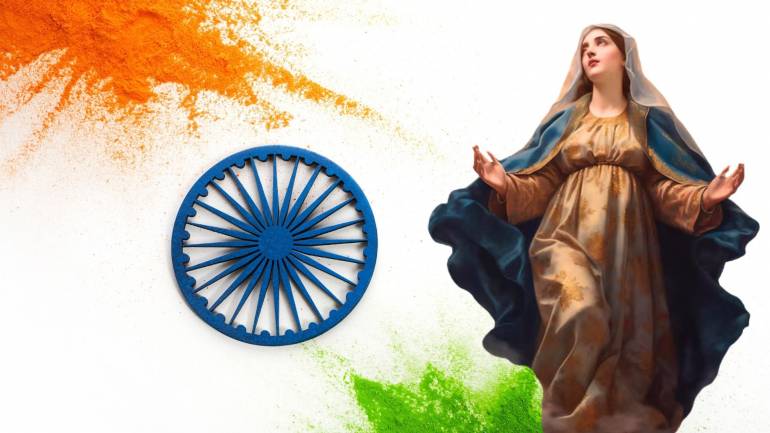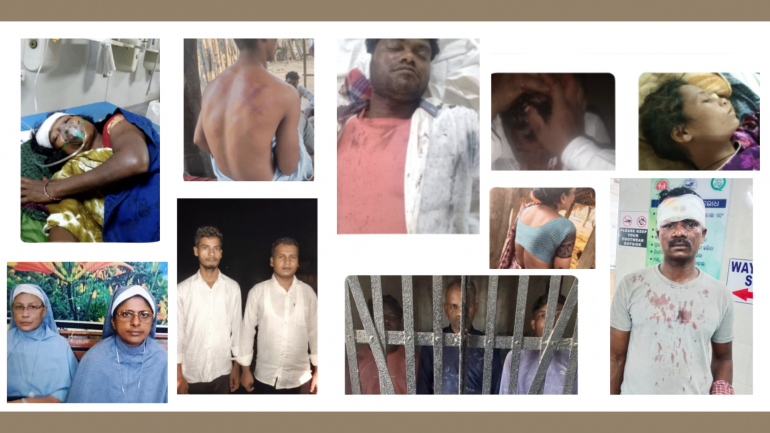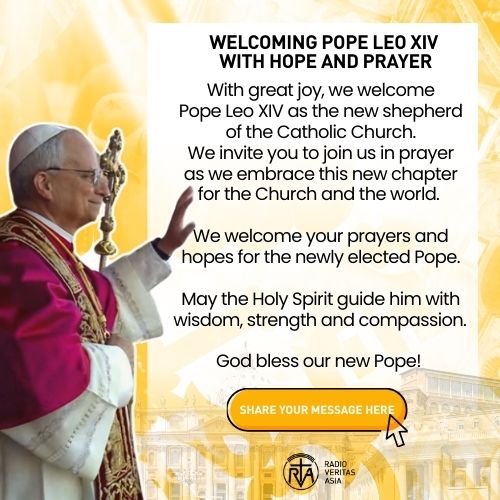One Day Carries Two Dreams of Liberation

Every August 15, something remarkable happens in India. Two celebrations unfold on the same day, one honoring the Assumption of Mary into heaven, the other marking India’s independence from British rule. For Indian Christians, especially Catholics, this captures the tension and beauty of living between two worlds: faith and nation, devotion and citizenship.
The story begins with Mary. Catholic teaching holds that she was taken up to heaven, body and soul, the Assumption. This is not just a theological point. It is about God honoring someone who lived humbly, who said yes when it was dangerous to do so, who stood by her son even when the world turned against him. Mary was not powerful by earthly standards. She was a young woman from an occupied territory, living under foreign rule. Yet her life became a testament to quiet strength and unwavering faith.
Then there is India’s independence, also on August 15. In 1947, after centuries of colonial rule, India finally broke free. This freedom was not handed over politely; it was fought for, protested for, and paid for with blood and sacrifice. It represented the dream of a nation where people could govern themselves, practice their beliefs freely, and live with dignity.
For Indian Christians, these two August 15 celebrations tell a single story about liberation. One speaks of spiritual freedom, the other of political freedom. Both required sacrifice. Both promised something better than what came before.
This matters because Christians in India often find themselves caught between competing loyalties. Christianity in India is not new or foreign, despite what some claim. Saint Thomas likely brought Christianity to Kerala in the first century, making Indian Christianity older than most European versions of the faith. For nearly two thousand years, Christians have been part of India’s story, contributing to education, healthcare, and social reform.
Yet today, being Christian in India can feel complicated. Christians run some of the country’s best schools and hospitals. They serve in government, lead social movements, and care for the poor. But they also face suspicion. Churches get vandalized, pastors get arrested on conversion charges, and entire Christian communities sometimes face violence. In states like Chhattisgarh and Odisha, Christians have been driven from their homes simply for their faith.
This is where August 15 becomes more than just a calendar date. The Assumption reminds Christians that God sees their struggles and that dignity cannot be stripped away by human hatred. Mary’s story, humble beginnings, faithful endurance, and ultimate vindication mirrors the experience of many Indian Christians today. They may be small and sometimes powerless by worldly measures, but their witness matters.

Independence Day carries its own message. The India that emerged in 1947 was meant to be inclusive. The Constitution guarantees religious freedom not as a favor, but as a fundamental right. Leaders like Gandhi, Nehru, and Ambedkar envisioned a nation where difference would be celebrated, not suppressed. For Christians, Independence Day represents hope that these founding ideals will eventually triumph over the narrow nationalism that sometimes threatens them today.
Walk into any Christian parish on August 15, and you will see this dual identity on display. The Indian tricolor flies alongside religious banners. Hymns to Mary mix with the national anthem. These are not competing symbols; they are complementary ones. They say something important: you can be fully Indian and fully Christian at the same time.
This is not just symbolism. Across India, Christians live out this dual commitment daily. They teach in government schools in remote villages, staff clinics in tribal areas, advocate for Dalit rights, and shelter the homeless. Their work rarely makes headlines, but it transforms lives. They understand that faith without action is empty, and that loving God means serving others, especially those society overlooks.
In many ways, these Christians are like Mary herself, quiet revolutionaries who believe that God lifts up the humble and feeds the hungry. They resist both spiritual despair and social injustice through simple acts of love and service.
The tension is not always easy. When politicians question their loyalty or extremists attack their churches, Indian Christians must decide how to respond. The example of Mary and the promise of independence both point toward the same answer: persist with love, serve with humility, and trust that justice will eventually prevail.
This August 15, as bells ring for Mary and flags wave for India, Christians across the country will stand in that sacred tension between heaven and earth, between prayer and action, between faith and citizenship. They will remember that freedom, whether from sin or oppression, is not something you achieve once and forget. It is something you must choose again each day.
In Mary’s assumption into heaven, they see the promise that suffering is not the end of the story. In India’s independence, they see the dream of a society where everyone can live with dignity. Both celebrations remind them that they belong to God, to India, and to the long struggle for a more just world.
The two August 15 celebrations will continue to coincide, year after year, carrying the same message: that liberation, in all its forms, remains worth celebrating and worth working toward.








